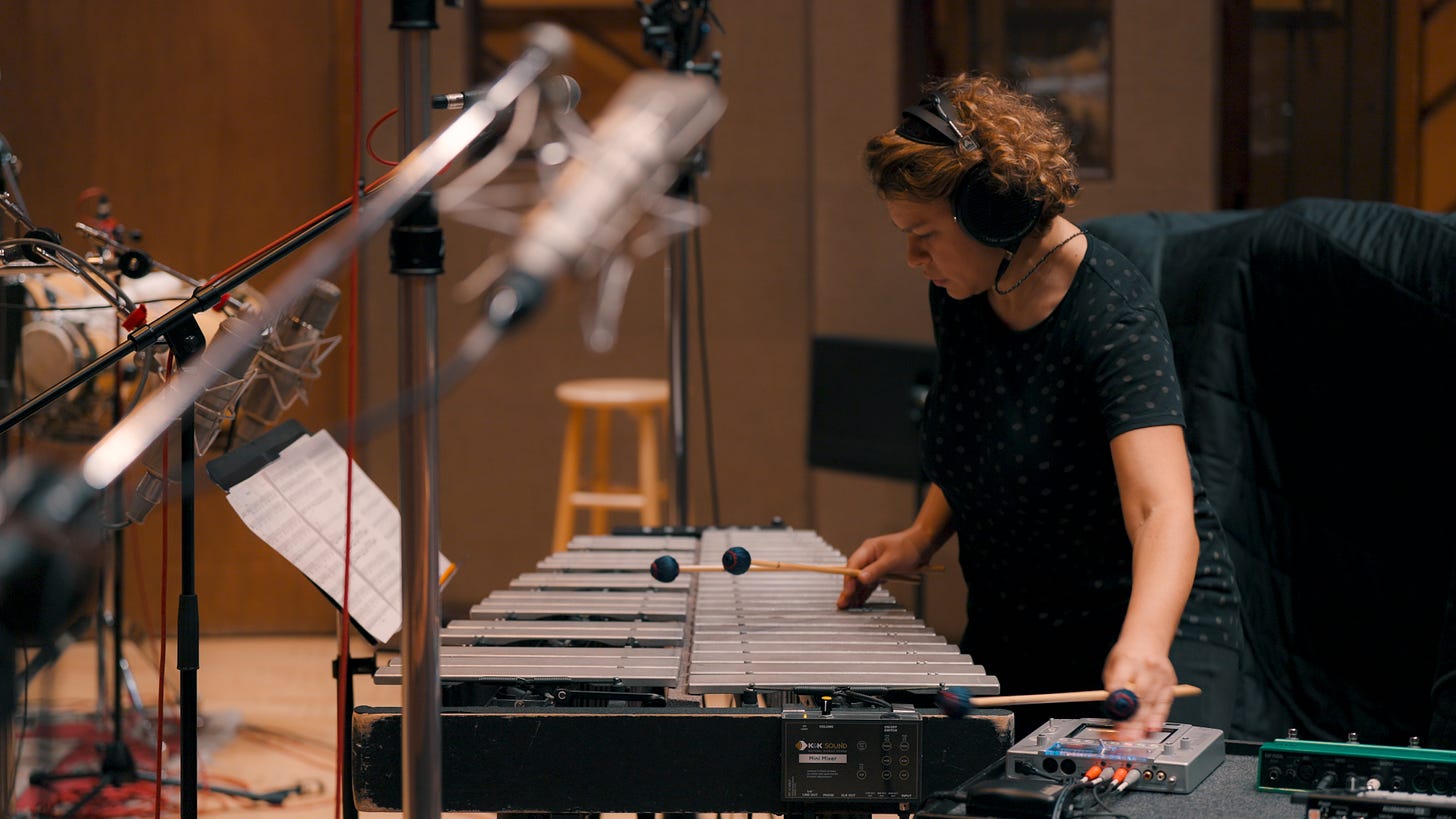Patricia Brennan. Photo by Frank Heath.
Something Old(er)
Against the usual expectations, it’s been a good couple of months for vibes. I’m talking about the most anonymous instrument in jazz, the vibraphone. I’ll point you to my longer look at the new Mosaic Records Bobby Hutcherson set for the instrument’s place in jazz—the tl;dr version is that you can’t really make the metal bars sound any different, so figuring out who’s playing the vibes means listening past the sound of the instrument and to the refined details of their musical thinking. That’s close listening that even a lot of jazz fans don’t do, which is fine, you can always check the credits and dig what’s being played. But it does tend to undervalue vibes players vis-a-vis horn players, and even pianists, in jazz history.
The Hutcherson set is superb, by the way. He was one of the great figures in the the ‘60s and this seems to be the first time this discography was ever available at one time, which is invaluable. One of the archival releases of the year, rivaled in importance only by:
Some Things New
There’s also some new albums out with either the vibes player leading the band, or the instrument front and center. That last is the case with Unforeseen Blossom (Giant Step Arts) from saxophonist Neta Raanan, which has Joel Ross in the middle of the group. Ross is one of the leading voices of the new generation of vibes players, with a couple fine recordings on Blue Note, and he’s excellent here. Vibes players have to articulate their ideas clearly and distinctly to stand out as themselves, and that’s Ross. It’s particularly key because he’s not the leader, so his statements are as a soloist.
He’s so good that it’s an odd fit for the set. Raanan is the leader, and is a solid but fairly anonymous player. She has the warm, post-Coltrane tenor sax sound that seems to be everywhere this century, and her soloing is a little undercooked even as this was recorded in front of an audience at Bar Bayeaux. The press materials have her saying: “There’s an unedited energy and a kind of wild edge to live albums that I love,” but there’s none of that in her playing. Listen to this for Ross.
Simon Moullier is another young vibraphonist, a talented, energetic, and stylish player whose albums have previously left me a little frustrated. They’ve been full of great ideas and moments, but have also felt both too long and too short, too many dense, concentrated statements that never seem to have quite the right amount of time to develop into an impression.
His new release, Elements of Light (Candid, to be released September 20), is the album I’ve been waiting for. It’s both longer and shorter in the right way, with tracks that do a little less, take a little more time, and so have so much more to say, and display so much more stylish musical thinking, than before. This is a complete, coherent album that’s a pleasure from start to finish, with elements of rock and techno and soul while holding on to a hard core of jazz. Where Moullier before filled up space with notes, here he is often content just to play and elegant line or sequence of chords. Fine and satisfying, check out this single:
Last in this newsletter, but in no way least, is Breaking Stretch (Pyroclastic, out September 6), from Patricia Brennan and her Septet. This is a best-of-the-year level album, fresh and strong in almost every moment and in almost every way. I have one minor criticism of it, which is that Brennan likes to use a pedal to bend the pitch of her vibes, and there’s some similar processing on some of the horns. This can be intriguing but there’s no clear musical logic to how she uses it, most heavily on the opening track, “Los Otros Yo (The Other Selves).” It comes off as a gimmick. But there’s so little of it overall that it’s easy to get past, and everything else is great.
As Raanan’s album features Joel Ross, so does Brennan feature the great and criminally under-documented tenor saxophonist Mark Shim. His big, gruff sound, and the quickness, verve, and power of his thinking and playing are one of the great things in contemporary jazz, so this album is worth a listen for that alone. But he in no way outshines the leader, her composing and arranging, or the rest of the ensemble: Jon Irabagon, Adam O’Farrill, Marcus Gilmore, Mauricio Herrera, and Kim Cass—an all-star group. There is a real sense of a group playing together, and Brennan leads with a superb balance of interesting compositional ideas and space for the soloists. This is a lesson in what forward looking mainstream modern jazz can be.
Listen, and be cool.



